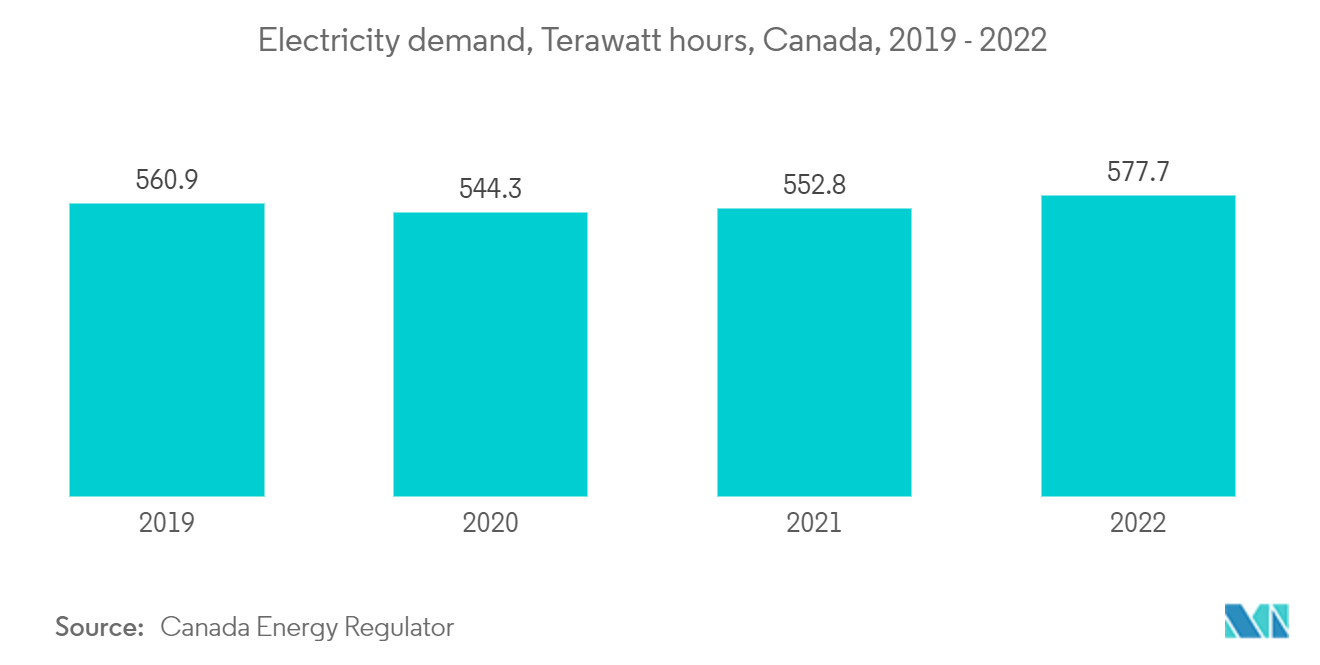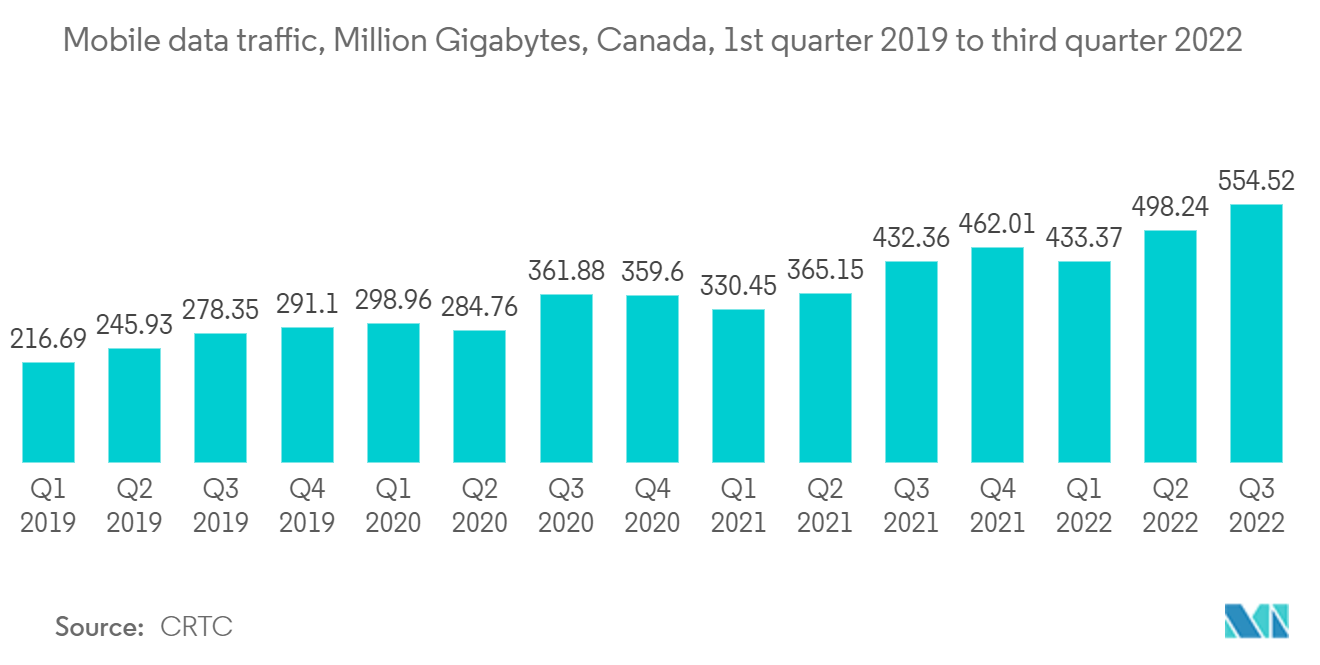Market Trends of Canada Data Center Power Industry
Monitored PDU is Anticipated to be the Largest Segment
- Monitored rack PDUs are ideal for high-density data centers, especially large colocation facilities that do not require manual power consumption reporting for billing purposes and cloud providers that need to support fluctuating power loads without compromising energy efficiency.
- The demand for massive data centers was minimal as digitization applications had yet to gain traction. However, since COVID-19 and post-pandemic, the need for digitization applications has started gaining traction due to government norms of social distancing and maintaining minimal contact. The massive data center segment recorded growth during 2019-2023. Hence, the growth rate observed during 2016-2023 accounted for around 39.4%. A growing number of smart city projects, high-quality content streaming services, and rising adoption of IoT platforms by Canadian homes are further expected to catalyze the growth of massive data centers proportionally during the forecast period.
- Due to the growing number of massive size data centers in the country, the demand for Smart PDUs has increased. Smart PDUs measure real-time voltage, current, power, and energy consumption. They also work with data center infrastructure management tools to generate reports showing a facility's power consumption trends and alerts for unexpected events.
- In 2018, 82% of Canada's electricity came from low-carbon energy sources. Around 60% of electricity generation came from hydropower, 15% from nuclear power, and the remaining 7% from other renewable energies. Rogers Communications is one of Canada's largest data center operators, with 12 centers across the country. It leases more than 200,000 sq. ft of facilities to small and medium-sized businesses.
- Further, by monitoring energy consumption trends, administrators can plan for future growth and ensure that power capacity is maintained to prevent overloads that could lead to equipment failure. In addition, this will help detect inefficiency and reduce energy consumption. Avoiding unnecessary energy consumption will lead to savings and a reduction in the environmental footprint.

IT and Telecommunication is the Largest Segment
- Canada has a very strong domestic technology sector. The Canadian information and communications technology (ICT) sector has more than 43,200 companies. The majority are in the software and computer services industry. This sector primarily consists of small and medium-sized enterprises, approximately 35,500 of which have fewer than 10 employees. There are around 100 large companies with 500 or more employees, including subsidiaries of foreign multinational companies.
- As the country plans to develop more smart cities in the future, it will integrate IoT, blockchain, AI, and other cutting-edge technologies, resulting in more significant data generation. According to the government of Canada's Smart Cities Challenge, which was launched in 2017, more than 225 municipalities expressed an inclination to explore the plan's advantages by filing their applications, demonstrating interest in developing more smart regions in the future. This would further be bolstered by the emergence of 5G services in smartphones and other faster network technologies, giving rise to wider deployment of smart devices that are controlled by apps in smartphones. This would increase the demand for more DC facilities with appropriate PDU units.
- Other significant investments by the Canadian government are expected to encourage major operators to expand their fiber coverage across the country, contributing to strengthening data transmission. In August 2022, Rogers and Bell Canada bagged grants of about USD 500 million for fiber builds across Ontario's underserved locations. These are in line with the local government's long-term investment policy worth USD 4 billion to deliver broadband services to every location in the province by the end of 2025.
- Telecommunication has further evolved and started using a hybrid cloud structure, which combines both public and private cloud structures. The usage of this hybrid cloud structure helps telecommunication companies manage the sudden surge in traffic. The implementation of hybrid cloud services helps the telecom industry deploy its cloud services instantly, leading to lower downtime. The increased bandwidth speed increased data consumption on mobiles from 1.5 GB in 2016 to 5.1 GB in 2023, and it is expected to reach around 8.6 GB by 2029. Owing to the abovementioned factors, the DC facilities are expected to grow during the forecast period.


